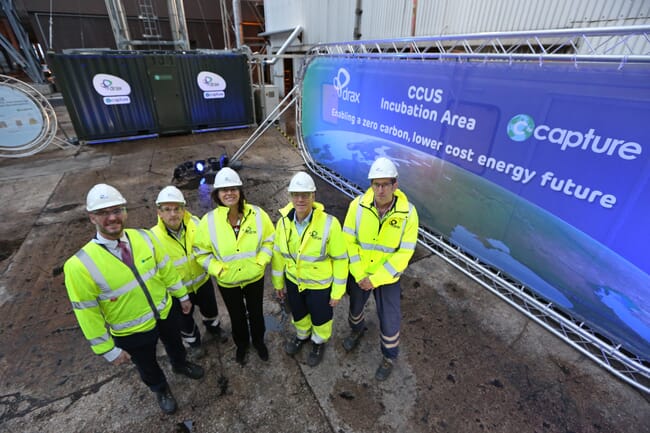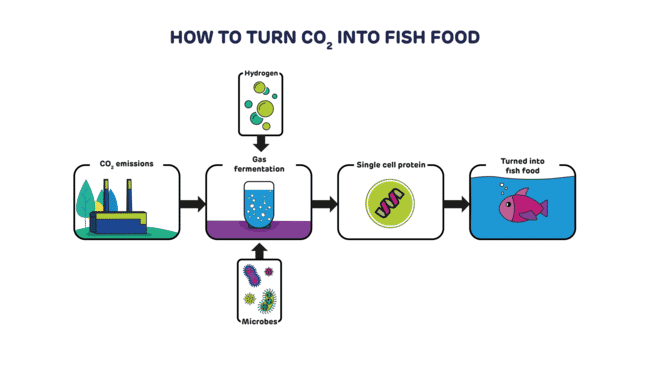Deep Branch Biotechnology, a spin-out from Nottingham University, is partnering with Drax Group on a new bioenergy carbon capture usage and storage (BECCUS) pilot which could be used to create proteins that replace soy and fishmeal in aquafeeds from the power station’s carbon dioxide emissions.
The team plan to extract flue gases from the North Yorkshire power station’s renewable electricity generation to feed to microbes, which can make single cell proteins for use in fish food and other sustainable animal feeds.

Drax Group CEO, Will Gardiner, said: “By giving partners like Deep Branch Biotechnology access to our CCUS Incubation Area we can test emerging technologies and explore their potential in delivering for both the climate and the economy.
“We want to create a cleaner environment for future generations whilst generating new jobs and export opportunities for British businesses. Technologies like this could enable some of our more difficult to decarbonise sectors, like agriculture, to make positive changes to address the climate crisis.”
Drax Power Station is the biggest renewable electricity generator in the UK and the largest decarbonisation project in Europe, having converted two thirds of the plant to use sustainable biomass instead of coal. A dedicated Incubation Area has been created at the power station to give other technology companies the opportunity to test their processes on its carbon dioxide.
Chris Skidmore, the UK’s Minister for Energy and Clean Growth, said: “Carbon capture, usage and storage technologies are not only putting fizz in our drinks but feeding fish too.
“As we move towards net zero emissions and end our contribution to global warming, innovative projects like this will help reduce agricultural emissions and meet increasing demand for animal feed, demonstrating the enormous global potential CCUS has to tackle climate change.”
Peter Rowe, CEO of Deep Branch Biotechnology, explained that the method they have developed for producing proteins from CO2, relies on an edible microbe that consumes carbon dioxide. When fed carbon dioxide, the microbes grow and reproduce, enabling them to be continually harvested for protein whilst maintaining a growing culture. Under optimal conditions, up to 70 per cent of the material produced is protein.

The benefits of this process over other carbon capture technologies is that the CO2 does not need to be separated from the power station’s flue gases before being fed to the microbes.
Rowe said: “Meat production is set to double by 2050 as global populations increase, but using existing methods of producing animal feeds to meet this growing demand is completely unsustainable.
“The technology we’ve developed is an exciting solution. We can convert up to 60-70 percent of CO2 into protein, helping to both minimise the greenhouse gases released into the atmosphere during power generation and other industrial processes, whilst producing protein for animal feeds which will help reduce the impact of agricultural sectors on the environment as well.”
The Deep Branch pilot will get underway in the autumn, when a demonstration plant will be installed within the Drax CCUS Incubation Area.
It aims to capture enough CO2 to produce 100kg of protein to be used to create feedstocks for fish and livestock. The protein generated from the project will be used in a trial project with a major feed producer.
If successful, Deep Branch Biotechnology plans to build a larger production facility by 2020 so it can produce several tonnes of protein per year.

